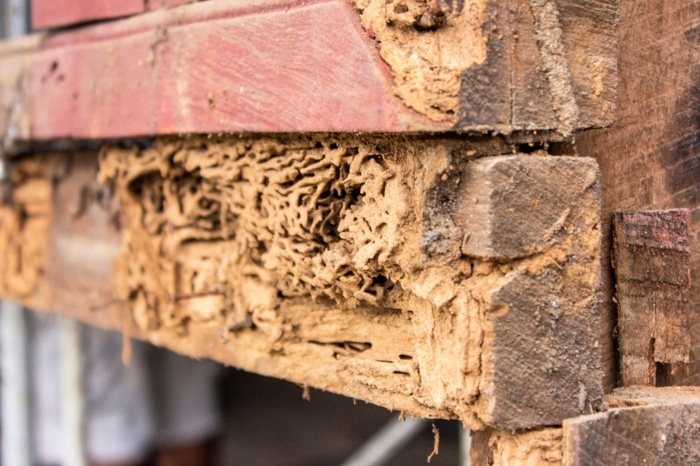Just as you’re about to relax in your cosy Oklahoma home, a creepy crawler scuttles across the floor. It’s not the first time, and it certainly won’t be the last. Oklahoma’s diverse climate, ranging from humid subtropical regions to its arid western plains, creates a perfect breeding ground for a variety of household pests. Understanding the types of bugs that commonly invade homes in Oklahoma is the first step in effective pest management and maintaining a comfortable living environment.
Common House Bugs in Oklahoma
Oklahoma residents often encounter a mix of insects that can be both a nuisance and a cause for concern. Some of the most prevalent household bugs include:
Cockroaches:
These resilient insects are notorious for their survival skills. The American cockroach, often found in Oklahoma homes, thrives in warm and damp environments, making basements and bathrooms their favourite hideouts. They are not only unpleasant to encounter but can also carry harmful pathogens.
Bed Bugs:
A growing problem in many areas, bed bugs are small, elusive, and can cause significant discomfort with their bites. They are excellent hitchhikers, often coming into homes through luggage, furniture, or clothing.
Ants:
From the tiny, sugar-loving pharaoh ants to the larger carpenter ants, these insects are common in Oklahoma. While some are just a nuisance, others like the carpenter ant can cause structural damage to wood in homes.
Spiders:
Oklahoma is home to a variety of spiders, including the harmless common house spider and the more dangerous brown recluse. While most spiders are beneficial, controlling pests in the house, their presence can be unsettling, and bites from certain species require immediate medical attention.
Understanding the behaviour and habitat of these common pests is crucial. For instance, reducing moisture in the home can make it less attractive to cockroaches, while meticulous cleanliness can deter ants and bed bugs.
Common Bugs in Oklahoma: Outdoor Pests
Stepping outside, Oklahoma’s residents are greeted by an array of bugs that inhabit their gardens and yards. Here’s a look at some common outdoor bugs:
Mosquitoes:
Thriving in Oklahoma’s humid summers, mosquitoes are not just annoying; they are also carriers of diseases like West Nile virus. Eliminating standing water in yards is a key step in controlling their population.
Ticks:
Found in wooded areas and tall grasses, ticks are a concern for both humans and pets. They can transmit diseases like Lyme disease, making it important to practise preventive measures like using tick repellents and performing regular checks after outdoor activities.
Garden Pests:
Common garden pests like aphids, caterpillars, and Japanese beetles can wreak havoc on plants. However, not all insects in the garden are harmful. Beneficial insects like ladybugs and praying mantises play a vital role in natural pest control.
Managing these outdoor bugs involves a balance between controlling harmful pests and protecting beneficial insects that contribute to a healthy ecosystem. For instance, using natural or organic pest control methods can be effective while preserving the health of the garden and environment.
The Seasonal Variations of Bugs in Oklahoma
Oklahoma’s distinct seasons play a crucial role in the behaviour and population dynamics of household pests. During the sweltering summer months, pests like mosquitoes, flies, and ants are in full swing, making their presence overwhelmingly felt both indoors and outdoors. Homeowners often find themselves battling these pests more frequently as they seek refuge from the heat and look for food sources. Conversely, the winter months bring a different set of challenges. Pests such as spiders, mice, and cockroaches seek warmth and shelter, often invading homes to escape the cold. This seasonal migration into homes can be mitigated by preparing in advance – sealing cracks and openings before the onset of winter can significantly reduce the likelihood of these cold-weather intrusions.
As spring blooms, it heralds the emergence of a variety of insects, including beneficial pollinators like bees and butterflies, alongside pests like termites. Termites, in particular, can cause extensive damage to wooden structures and are most active during this season. Early detection and treatment are vital to prevent long-term damage. The fall, while beautiful, is also a key time for pest preparation. It’s an ideal period for homeowners to conduct thorough inspections and pest-proof their homes in anticipation of the colder months.
Stinging Insects in Oklahoma: A Safety Guide
Stinging insects, while playing an essential role in the ecosystem, can pose significant risks to residents, especially those with allergies to stings. Among these, wasps and bees are the most common in Oklahoma. Wasps, aggressive in nature, can sting multiple times, making them a particular concern during outdoor activities. Bees, while generally less aggressive, can still pose a threat, especially when their hives are disturbed. Safety around these insects is paramount. Avoiding brightly coloured clothing and strong perfumes can reduce the likelihood of attracting these insects. In the event of discovering a hive or nest near your home, it’s crucial to resist the urge to deal with it yourself. Professional removal services, like those offered by Pest Share, can safely and effectively handle these situations, minimising the risk to you and your family.
Flying Insects in Oklahoma: Identifying Airborne Pests

The skies of Oklahoma are not just for birds; they are also frequented by a variety of flying insects. Moths, flies, and mosquitoes are common airborne pests that homeowners contend with. Moths, while seemingly harmless, can cause damage to clothing and pantry goods. Keeping homes clean and using natural deterrents like cedar can help in controlling their population. Flies, attracted to food waste and other decaying material, can be a nuisance and a health hazard. Ensuring proper sanitation and using fly screens can effectively reduce their presence. Mosquitoes, on the other hand, are not just annoying; they are also potential carriers of diseases. Utilising mosquito nets, repellents, and eliminating standing water sources can significantly help in controlling their population.
Oklahoma Insects: The Role of Local Ecosystem
The insect population in Oklahoma is not just a matter of pest control; it’s also about understanding their role in the local ecosystem. Many insects, often perceived as pests, play critical roles in pollination, decomposition, and as a food source for other wildlife. For example, while ants can be a nuisance in homes, they are vital in the environment for their roles in soil aeration and decomposition. Similarly, spiders, often feared and misunderstood, are excellent at controlling populations of other insects, acting as natural pest controllers. This delicate balance in the ecosystem underscores the importance of targeted and thoughtful pest control strategies. Instead of broad-spectrum insecticides that can harm beneficial insects, more focused treatments are advisable. Biological control methods, such as introducing natural predators of specific pests, can be an effective and environmentally friendly solution.
Understanding the ecological role of insects leads to a more sustainable approach to pest control. For instance, encouraging the presence of pollinators like bees and butterflies in gardens by planting native flowers not only enhances the beauty of the landscape but also supports the local ecosystem. Creating a bug-friendly garden, with areas left wild or the inclusion of bug hotels, can provide habitats for beneficial insects. These practices contribute to the health of the broader environment in Oklahoma, while also managing pest populations in a balanced manner.
Partnering with Pest Share for Effective Control
When it comes to managing the diverse range of pests in Oklahoma, a one-size-fits-all approach rarely works. Customised solutions tailored to specific situations and types of pests are essential for effective control. This is where partnering with Pest Share can make a significant difference. Pest Share offers specialised services that take into account not only the type of pest but also the particular needs and circumstances of each household or property.
For instance, dealing with a termite infestation requires a different strategy compared to managing a mosquito problem. Pest Share professionals are equipped with the knowledge and tools to assess each situation and implement the most effective solutions. Moreover, their approach considers the safety of both the residents and the environment, avoiding unnecessary harm to non-target species and minimising the use of harmful chemicals.
Utilising Pest Share’s services also means staying ahead of the game when it comes to pest control. Regular inspections and preventative treatments can drastically reduce the likelihood of severe pest problems. This proactive approach not only saves homeowners the distress and potential damage caused by infestations but also contributes to a healthier and more comfortable living environment.
Conclusion
In summary, understanding and managing the wide array of insects in Oklahoma requires a multifaceted approach. From acknowledging the roles these creatures play in the local ecosystem to adopting targeted pest control methods, each step is crucial in maintaining a balanced environment. Homeowners and property managers can significantly benefit from the expertise and customised services offered by Pest Share, ensuring effective and environmentally conscious pest control tailored to their specific needs.





